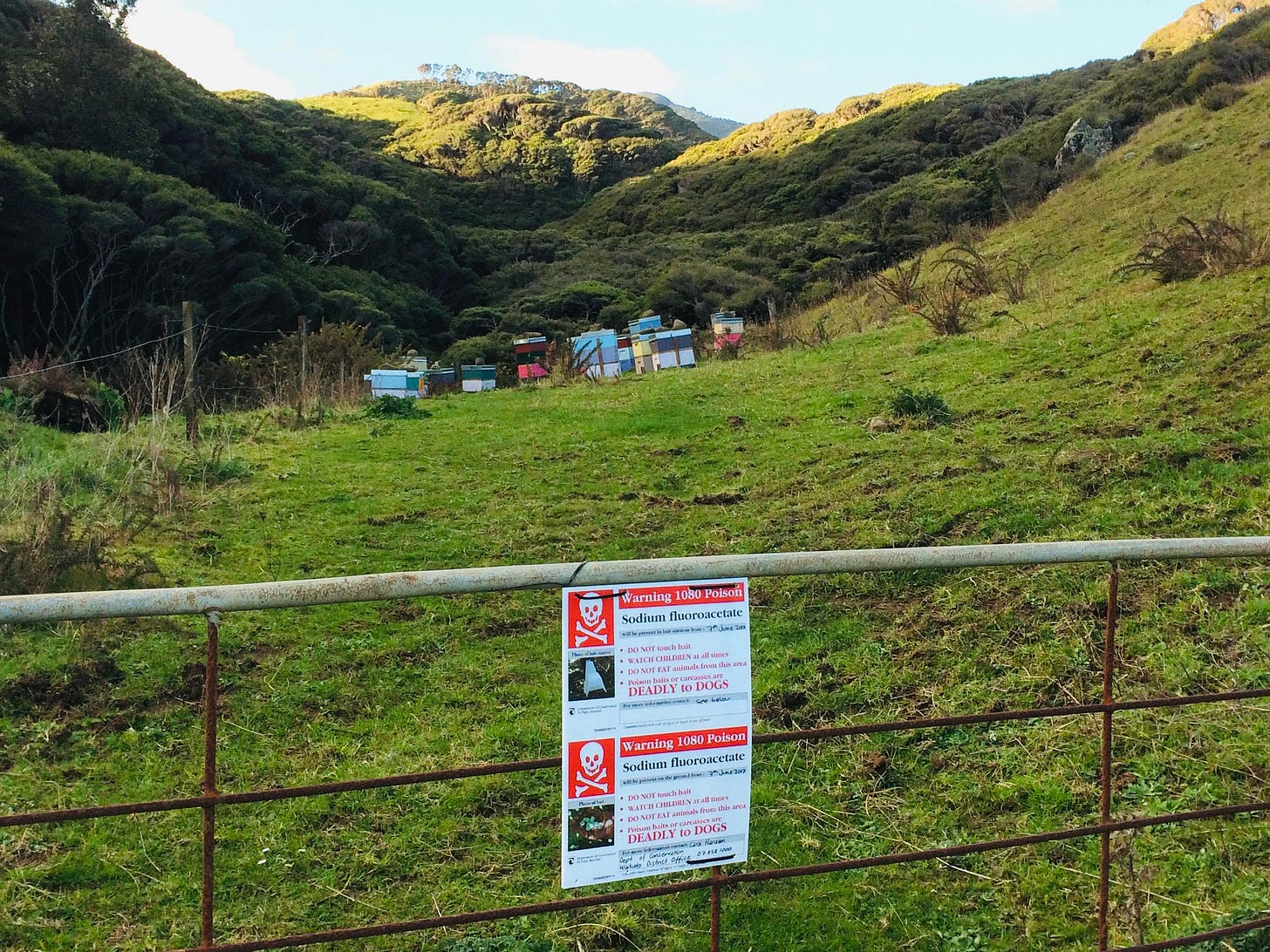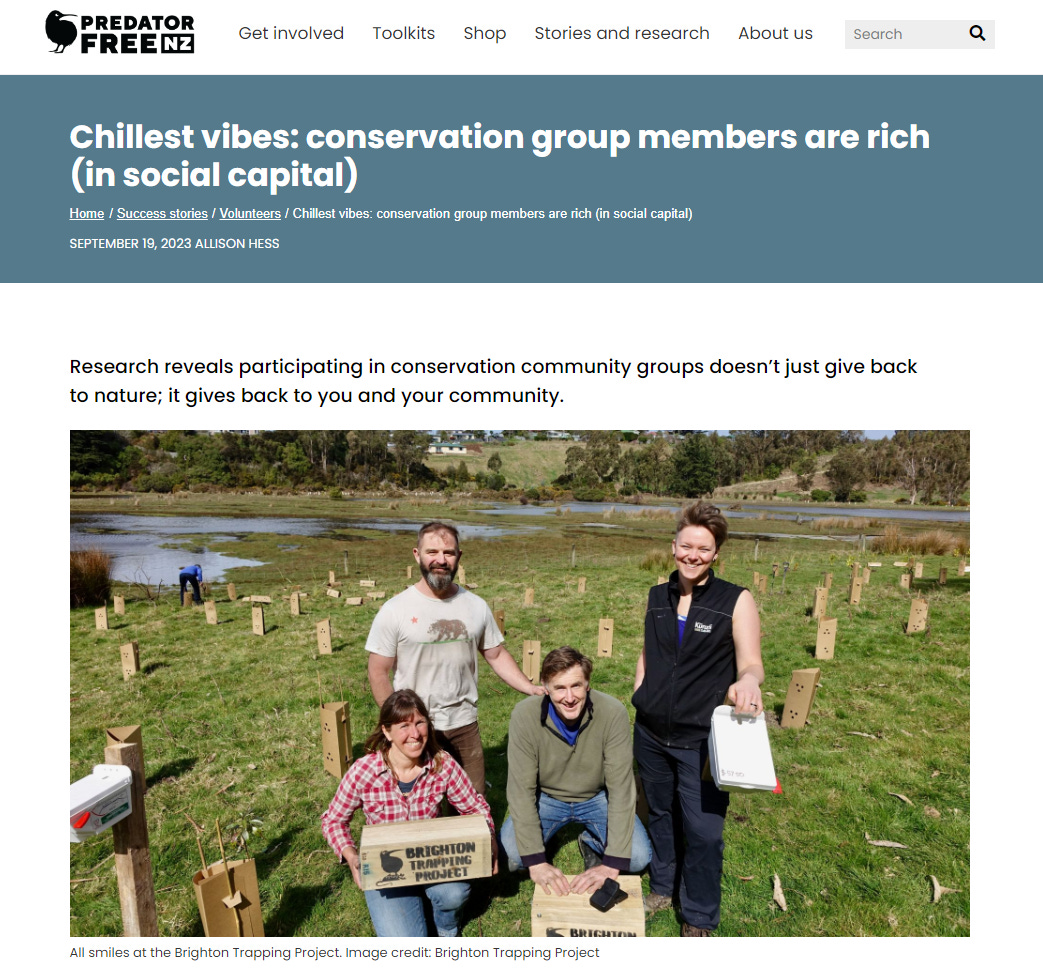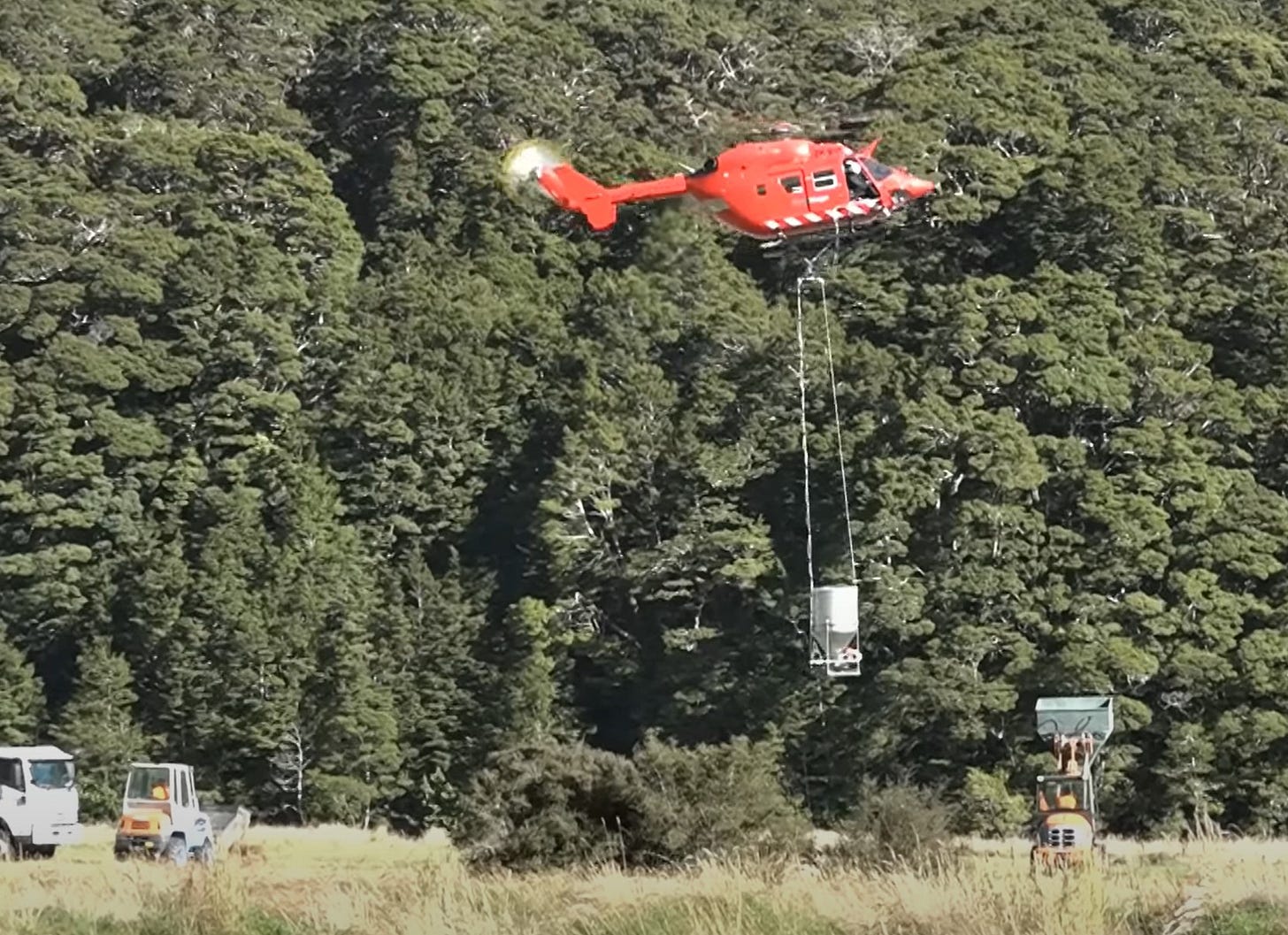Nudge Units, Mindspace and Poisoning Paradise
How Psyops techniques have been used against New Zealanders for 70 years, paradoxically convincing them how a lethal poison is safe.
Those of us reflecting and researching how and why we got into this mess will be familiar with the Dolan, Hallsworth and Halpern et al report, which spells out the strategies that formed the Psyops of the covid era. You can find the full (sickening, unethical) document here:
The team at Reaching People have put together some excellent resources to help the public understand these sometimes counter-intuitive psychological strategies that have been weaponised against us, I highly recommend getting to grips with these asap.
The UK Government report MINDSPACE from over ten years ago, spells out the nine main strategies of how to influence and change public behaviour. This ‘Nudges’ us into taking certain decisions that we think we chose ourselves, but did not.
I thought it could be interesting to compare these techniques to other areas of public policy. I’m starting with the aerial 1080 poisoning in New Zealand, that I have discussed before. I could write a book on this subject, but here is a very brief run down of the Mnemonic of Mindspace, as applied to New Zealand’s 70 year old toxic obsession:
M is for Messenger
It really matters who gives you the instruction! We instinctively trust someone in authority, whether it’s a white coat, a white dog-collar or a hi-vis vest. Think of the ‘old-school’ respect for Policemen (before we were subjected to curfews in a military state). There are plenty of psychology experiments that support this theory, for instance, the famous Millgram experiment where people willingly complied to an ‘expert’s’ command to electrocute someone (thankfully, the equipment was fake), if an incorrect response was provided. This was an interesting example:
In the same way as ‘expert epidemiologists’ were wheeled-out with ‘TV Doctors’ during covid to promote the policy of lockdowns and then the roll out of the ‘safe and effective’ injections, so have New Zealand ‘experts’ been used to promote the ‘safe as a cuppa tea’ 1080 poison. Some academics even claiming they would happily ‘drink 1080-poisoned water’ to ‘prove it was safe’. Or give it to their kids to drink. Great stuff! There have been many such ‘Messengers’ over the 70 years of 1080 poison aerial operations, but here is one example of a ‘Green’ (!) politician:
I is for Incentives
Each aerial 1080 poison operation needs ‘informed consent’ from the land-owners affected (the operations themselves usually happen on ‘Crown’ land). Well, we know a bit more about how corrupt ‘informed consent’ really is now, eh? But let me explain a bit about how it works in the case of 1080, with the help of incentives. In theory, each iwi (tribe) should have a meeting with its members, to decide whether to sign-off a consent for their land to be poisoned (again) or not. But sometimes, the elders of each tribe are already personally connected to the contractors that undertaken the ‘informed consent’ process, and can bypass such a meeting.

Iwi are often in need of resources to support their communities or maintain their marae, so unsurprisingly, we also hear of funds or equipment being made available to some iwi, when they have apparently consented to the poisoning. Of course some of these Māori communities are deep in negotiations with the Government over land rights in Treaty of Waitangi Settlement Agreements, so there are inevitable tensions where some iwi may understandably feel pressurized to comply with a poison operation, in exchange for favourable treatment in the Māori Court. As to Pakeha (non-Māori) residents, we often have even less power to oppose a poison operation, which is surrounded by propaganda like those posted in my previous post. Other examples can be seen on the PeoplesInquiry2020.nz website and submissions.
N is for Norms
After 70 years of 1080 poison operations, and forests and paddocks regularly being subjected to aerial and ground poisoning, warning signs become normalized to the public and the potential risks for animals, birds and humans, meaningless. This normalisation of the dangers leads to apathy from hunters and fishermen, for example, who maybe subjected to sublethal dose of poison through eating contaminated meat or fish. Likewise for those walking and camping in these areas, who may unwittingly be drinking polluted water.
D is for Defaults
Closely connected to normalization, there is a continual reminder in MSM and other sources that natives are vulnerable and need protecting and ‘pests’ need to be eradicated. Predator Free 2050 promotes a $multi-million Government-sponsored PR campaign that apparently aims to kill all rats and possums by the target date. Of course, this is delusional – no country or island has ever achieved this. But the slowly-boiling frog technique maintains that PFNZ is nonetheless a ‘worthy aim of all good citizens.’ At the local market, free traps are provided for volunteers who want to ‘save the forest’ from a ‘plague of rats’. These kinds of ‘nudges’ encourage the easiest route: conform to the neighbourhood initiative and install a trap, providing the free marketing for the poison industry and again normalizing the behaviours of the ‘ingroup’ vs ‘outgroup’
S is for Salience
Just like the ‘safe and effective’ the poison 1080 is the ideal - indeed it was defined as the ‘best tool in the toolbox’ and the ‘solution to the problem’. So convenient to use (via helicopter) and apparently safe and biodegradable, it clearly offers the ‘best option’ to what is actually an exaggerated (or invented) problem.
P is for Priming
This strategy is used often in the run-up to a poison drop. For instance, there would be a propaganda piece in the MSM claiming that the forest under scrutiny is ‘collapsing’ due to the sheer numbers of ‘pests’. Also, the school children are primed with pictures of ‘evil’ possums, and encouraged to take-part in grotesque ‘competitions’ that involve dressing-up dead possums or throwing dead possums the greatest distance.
A is for Affect
The emotions have such a strong place in our decision-making processes. Our heart wins. This is used to good effect by the poison industry in appealing to the ‘cuddliness’ of the native birds, showing images of baby kiwi chicks being handled by ‘saviours’ of the birds…this always seems very offensive to me. Our Britishness always taught us to respect nature and keep a respectful distance from birds. Does this look like exploitation to a typical New Zealander? Nope. It’s normalised.
Or in contrast the (fake) images of kiwi’s eggs being eaten by possums/rats. Colourful brochures and expensive marketing videos and other PR are repeatedly rolled-out to reinforce the idea that the forests are ‘under attack’ and that the only way to ‘save our native birds’ is by spreading this highly-toxic poison over the thousands of hectares.
Affect is also used to silence dissent: the ‘anti-1080ers’ are vilified like ‘anti-vaxxers’ and labelled as ‘conspiracy theorists’ (because poison is safe, right?) and anti-nationalistic. There is also an element of Victim Identifiable Effect (VIE), where it is almost impossible for a typical member of the public to engage with the poison debate, because the victims of the poison are often seen as ‘far away’ from their everyday lives; irrelevant. More than 50% of New Zealand’s >5 million population lives in the fairly urban ‘Golden Triangle’ which is the area between Auckland, Hamilton and Tauranga. If most of the poisoning operations happen in the South Island and outside this area of the Golden Triangle in North Island, then much of the population is unaware and (assumes) unaffected by the poisoning. This VIE maintains the status quo of the gravy-train of the Poison Industrial Complex.
C is for Commitment
Many of the poison operations rely upon volunteerism – these people are given uniforms and/or badges to virtue-signal their commitment to the cause - in covid, the face-mask or other PPE, in this case the cause is native species being saved by the holy cult of ‘safe’ 1080 poison, they are ‘doing their duty’ for the greater good and even take on a martyr-type attitude if questioned on their behaviours.
E is for Ego
Finally, it all comes down to our sense of self. In NZ professional identity is often lacking, as occupation is seen as less important than family life. So like the climate change activists, the people’s commitment to the poisoning of their own land (and bodies) is seen as FOR THE GREATER GOOD – after all, who would want any native species to go extinct? The actions of volunteers are closely matched to these people’s identities, as they see themselves as undertaking important work for the nation. It is ironic that much of New Zealand’s population lives in an urban area, and have seemingly lost touch with food provenance and water purity through processed food in supermarkets and other conveniences of modern living. Yet they are convinced of their support for ‘rural NZ’ through projects that are in reality detrimental to sustainable farming and rural lifestyles.
Finally…
So that’s a quick run down of the MINDSPACE techniques as applied to NZ’s 1080 poison and the propaganda and censorship that the citizen’s have been subjected to for over 70 years. If readers are from NZ, can you think of some additional examples to throw into the mix?
If you want to learn more about the horrors of 1080 poison use in NZ, I would suggest you watch some of the excellent videos here, including the seminal, award-winning but highly censored doco Poisoning Paradise, read some of the scientific articles here or engage with some of the submissions collected by our www.PeoplesInquiry2020.nz or on YouTube.











I have another 1080 poison example that ostensibly falls under the category "Incentive". I lived for 10 years on the border of Kahurangi National Park in the South Island. One day, a man came to my door and wanted me to sign some paper giving my permission for an aerial drop (via helicopter) of the 1080 poison that might affect my own property. I asked for his card, and he gave me one. The man gestured in the area where the drop would be, and I informed him that that area is very near where I and two other neighbours had a water take from a spring heading down from the Park, so I would not give my permission. He then said that my neighbours already signed, and I replied that they may not care if they drink poisoned water, but I certainly do, and I refused to sign. He then said that if I sign, I would receive a link to a site that would show exactly where the drops were actually made, to assure myself that my spring water wouldn't be affected. I replied that I should receive that info whether I sign or not, of course. He got frustrated and left. I took the card and emailed the firm to which he belonged (I don't remember the name) and complained about his badgering behaviour and that I am requesting the link that he mentioned. There was no reply to my email. What a disgusting bunch of scumbags.
So, the "Incentive" he offered me was information to which I most likely had a right to receive, but I didn't pursue things further, as I was swamped at the time with elder care.
I didn't know most of this ... thank you Ursula ... I love the investigative work you do ...
pb